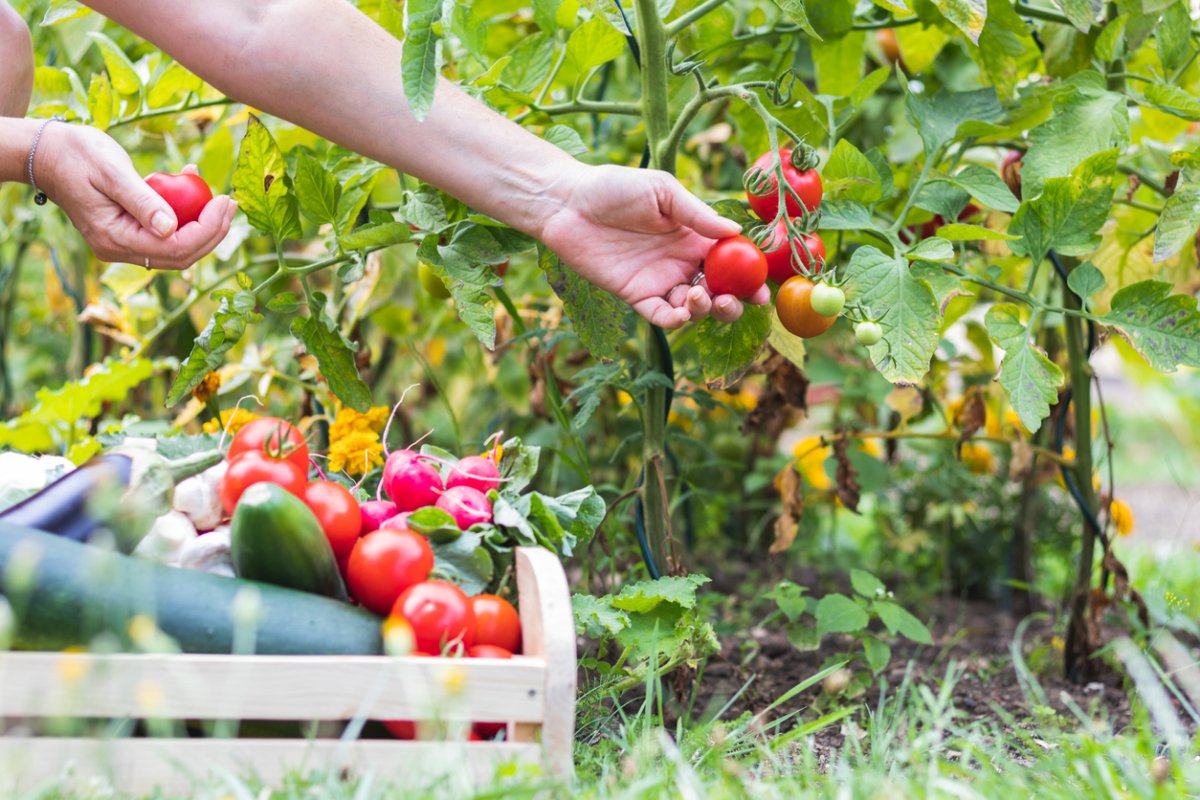

We may earn revenue from the products available on this page and participate in affiliate programs. Learn More ›
If you’d love a steady supply of fresh vegetables, the farming practice of succession planting can help you make that happen—and add tremendous variety to your plate. The technique involves planting multiple crops at intervals throughout the growing season, along with other methods for maximizing harvest, space, or growing time. With a little planning, you can optimize the amount and variety of fresh food you grow in your backyard vegetable garden.
Traditionally, on farms, succession planting relies on several staggered plantings of the same crop throughout the season. The average home vegetable garden has lots of variety, so the process is a bit more complicated. However, one or more succession planting options can work in nearly any home garden space, and the tips that follow can help you plan and succeed.
Succession Planting Options
Urban farms and home gardeners use one or more of several methods of succession planting to help maximize yield or variety of the food they grow for their families or communities. Some are better than others, depending on factors like length of growing season, space, or favorite herbs and vegetables.
Sequence Planting
This is the simplest type of succession planting and it involves rotating different crops in the same space as soon as the current crop is harvested. The number of crops a grower can rotate in sequence planting can vary by region, but most gardeners can fit in a fast-growing cool-season crop (like turnips), followed by a warm-season crop (like peppers or green beans), followed by another cool-season vegetable in late summer to early fall. For example, a gardener might sow snap peas in spring, zucchini in summer, and kale in early fall.
Best for: Limited space, with an average to long growing season.
Intercropping
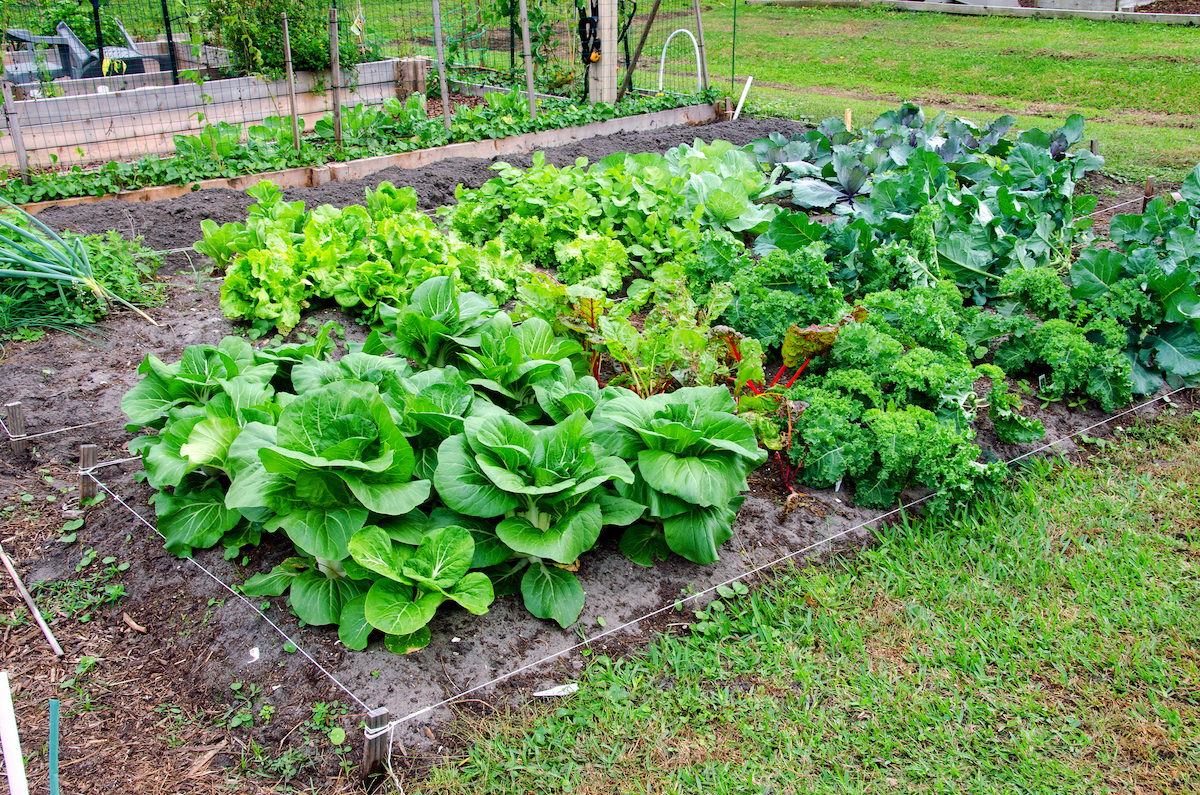
Intercropping can serve two purposes: maximizing space by mixing crops, or supporting a desired crop with a nearby companion plant. For example, you might be able to grow lettuce in conditions a little warmer than it likes if you plant it in the shade of tomatoes. Pumpkins can handle partial shade between rows of corn, and they help suppress weeds with their low spreading vines. With companion planting, you can use one crop to help repel insects attracted to its neighbor. For example, radishes help repel cucumber beetles, and the right variety can grow in the shade of a trellised cucumber.
Just beware that for all the plants that can support one another, there are plenty that make bad neighbors. For example, tomatoes and corn are bad companions, partly because both are tall and might compete for sunlight, but also because they attract similar pests, so doubling the attraction could damage both crops. Likewise, avoid placing several plants of the same family together.
Best for: Maximizing space and sun or shade exposure, supporting a neighboring plant.
Interval Planting
Any home gardener who has grown zucchini knows the pain of keeping up with an overabundance of the crop at harvest time. And though various vegetable types tend to yield fruit gradually throughout the season, some (like determinate tomatoes) produce a flush of fruit that needs harvesting nearly all at once. However, if you love greens, sowing their seeds every few weeks can provide an almost continuous supply of leafy salads.
This method also works well for “one and done” plants like cabbage, cilantro, or head lettuces to provide a more continuous food supply. By timing the planting of a vegetable in succession, you can enjoy it but with manageable harvests. On the other hand, if you want to make pickles and have the garden space, go ahead and sow several cucumber plants at the same time for a full harvest to can in late summer.
Best for: Spreading out harvests over the growing season to minimize waste of fresh vegetables, and maximize enjoyment of your favorite vegetable while it’s in season.
Planting One Crop with Staggered Maturity Dates
Another way to provide a more continuous and manageable harvest is to plant several varieties of a single type of vegetable that has different maturity dates. Cherry tomatoes naturally mature faster than beefsteak types, so planting one cherry tomato plant and one beefsteak plant can keep you in tomatoes for a longer time. This method is especially effective for corn, beans, and cabbage, as well as tomatoes.
Best for: Spreading out the harvest of a favorite herb or vegetable in gardens with plenty of space for growing.
Tips for Succession Planting Success
If you are unsure about the best succession planting options for your summer vegetable garden, some of the tips below can help. And, once you have a plan in mind, delve deeper by creating a visual picture with sketches and spreadsheets.
1. Find out your frost dates.
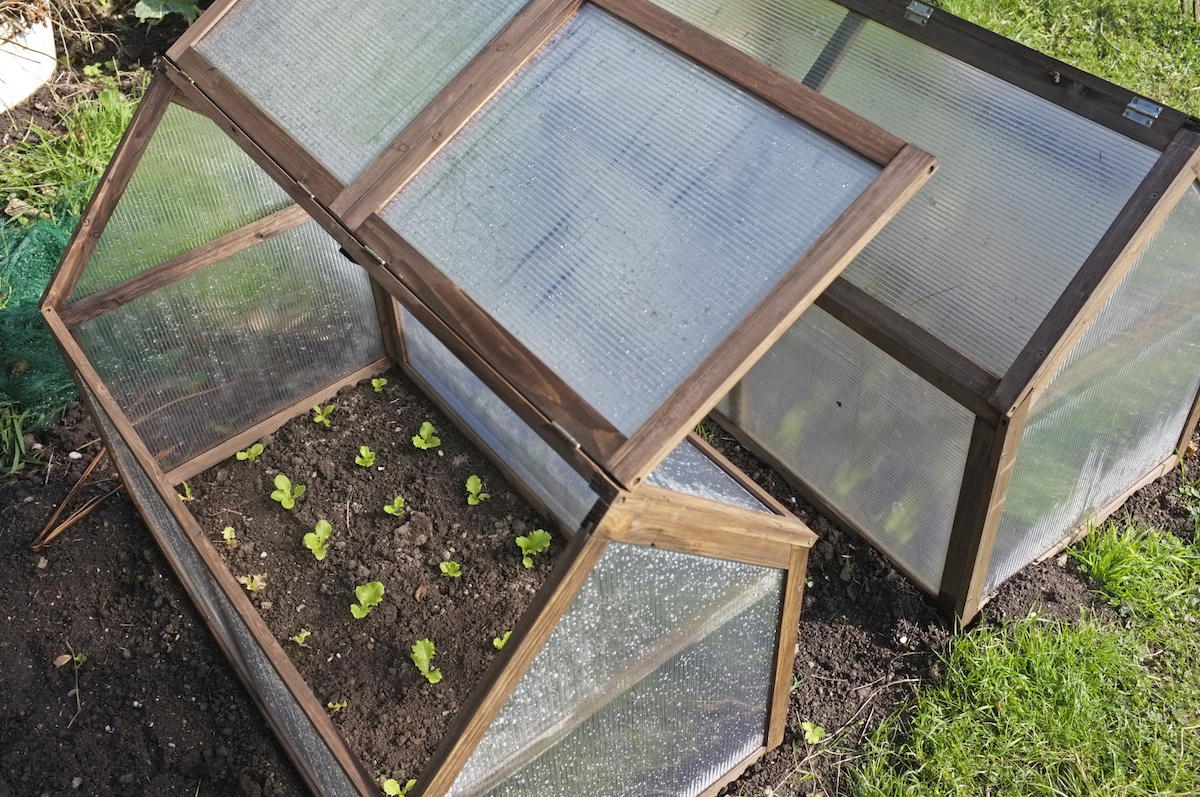
To practice succession planting, you must first understand gardening in your climate. Consult your local garden store, cooperative extension service, or credible online source to learn the average last spring frost and first fall frost dates in your area. The time between the last frost and first frost is your growing season. Note the dates and how long, in days, your growing season lasts to help create a succession planting timetable.
Many cool-season crops can stretch the growing season, however. Most can be planted or sown a few weeks to months before the last frost in spring. Carrots, cauliflower, and parsley are examples of plants that extend the end of the growing season. If sown or planted in time, the mature plants can survive temperatures near freezing.
2. Understand growing and harvest times.

When making a list of the crops you would like to plant, keep in mind that every veggie takes a different amount of time to grow from seed to harvest; the duration is indicated on seed packets. Different varieties of the same crop also differ in growing times, or days to maturity. If you transplant a seedling rather than sow a seed, days to maturity are shorter than those listed on the seed packet. Likewise, actual days to maturity can vary from those listed, depending on weather or other factors.
Further, some crops, like beans, tomatoes, and squash, aren’t harvested all at once—and the days to maturity reflect the first harvest date. Add 2 to 3 weeks or more of additional harvest time for the full lifespan of the crop. Compare the number of days in your growing season to the number of days that your crops need to grow. Some vegetables fill a significant portion of the growing season, while others take up a fraction of the time.
With the length of the growing season and individual crop growing times in mind, you begin to see opportunities to fill gaps. Use this information to begin building a succession planting plan that tells you what, when, and where to plant in your garden plot.
3. Determine how much you want to (and can) harvest.
One plant might be enough, or you may want a bounty of a particular edible. Compare expected yield and harvest times with how much each person in your house will likely consume to determine space and intervals for planting.
Then adjust so that your plan is realistic for your space and growing goals. If you are growing to supplement family meals with healthy produce, your desired yield will be considerably lower than if you’re aiming for self-sufficiency. If you want fresh cucumbers for salads, one or two plants will supply enough for most families. If you want to put up pickles too, you’ll need several plants.
4. Decide on a crop rotation.
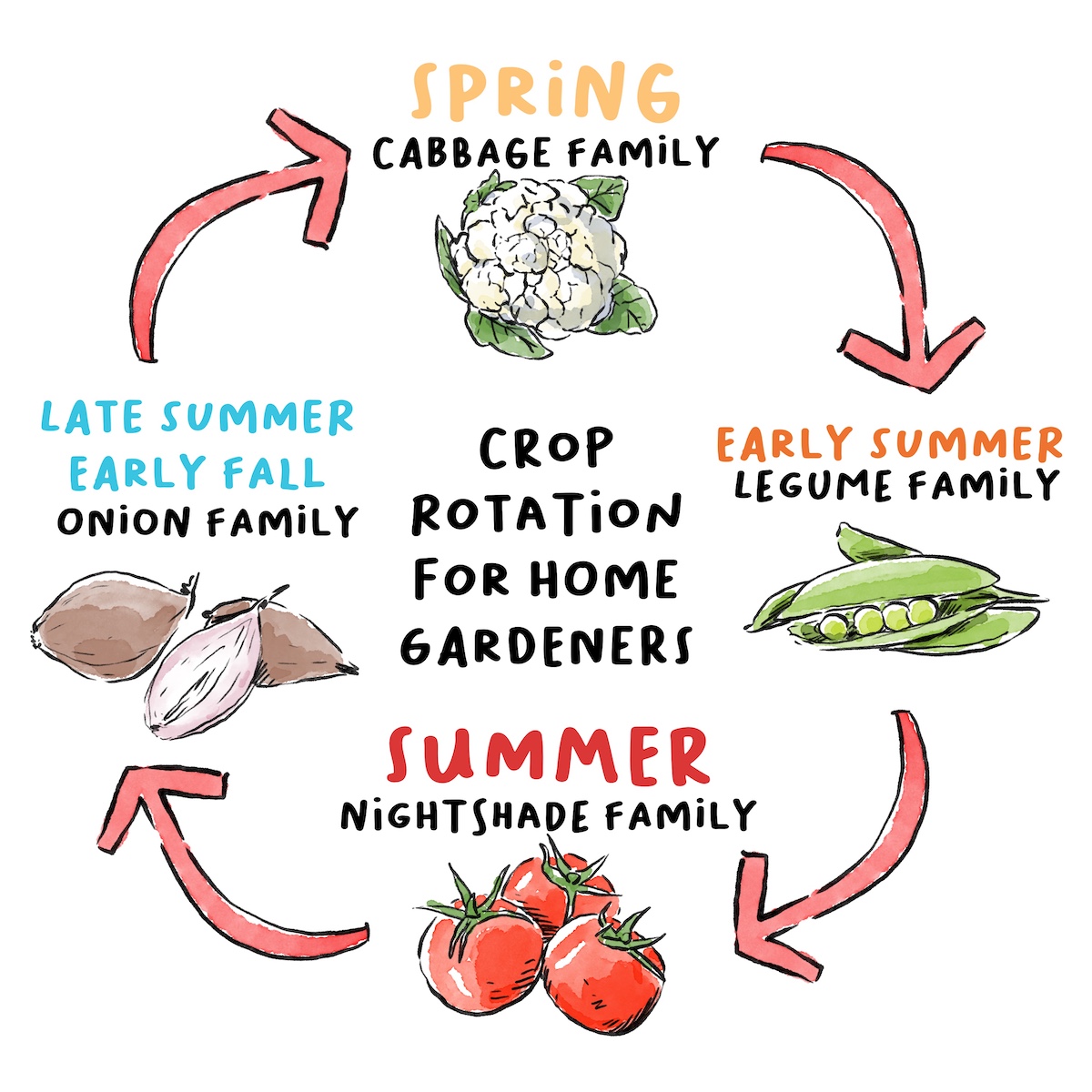
Each plant family has certain nutrient requirements and shares common pest problems. You can maximize nutrient efficiency and significantly reduce pest problems by planting different families in succession, in a given part of the garden. This is called crop rotation. Consider the plant’s family when selecting available spaces and intervals for the food you would like to grow.
For example, a good crop rotation that promotes plant and soil health is: cabbage family > bean family > nightshade family > onion family > carrot family > squash family > spinach family > miscellaneous greens, herbs, and/or small fruits. This rotation can take years, but you can do a simplified version with your sequence planting.
Another important factor as you create your succession planting plan is space, especially when intercropping. Seed and plant labels tell you the proper plant spacing for each crop. Large plants like watermelons, sweet corn, and sweet potatoes are not simply interchangeable with small plants like onions, lettuce, and carrots.
5. Sketch a plan and timetable.
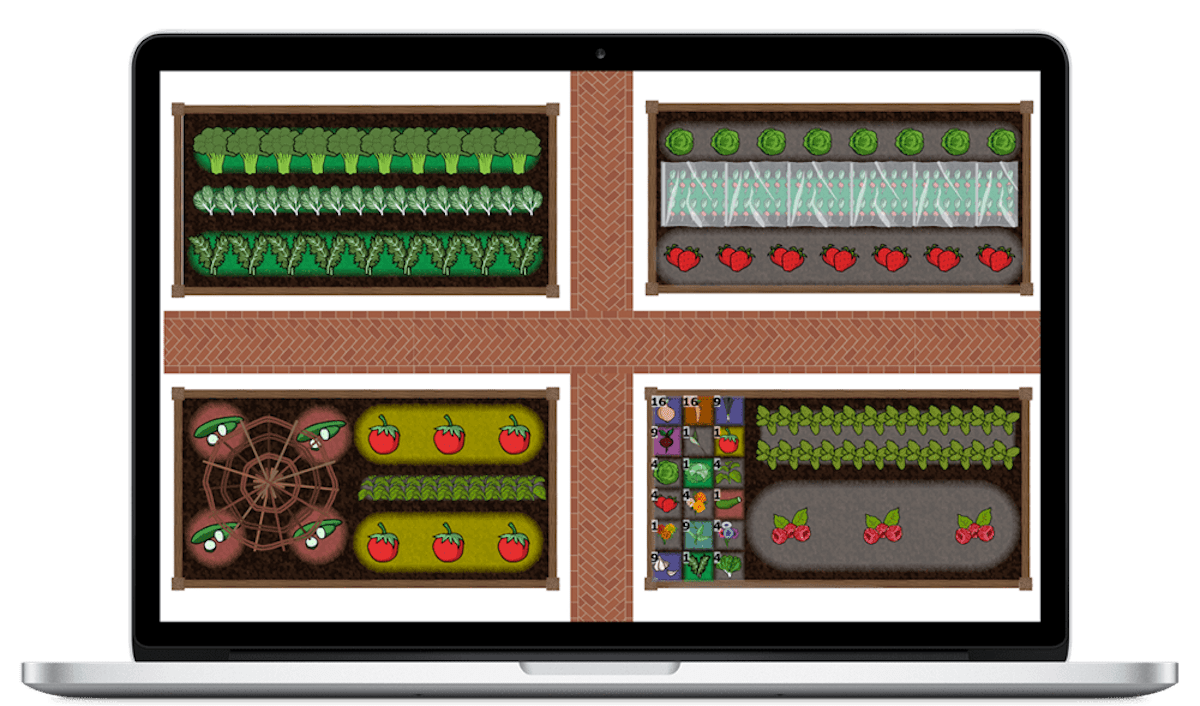
Sketch your garden plot on graph paper. Divide the plot into equal sections that represent the minimum amount of space you will need for your smallest crop. Later on, your plan might include one or more sections for a single crop, depending on its space needs. Assign each section a number. Then, create a garden map key spreadsheet. In column “A,” label each plot section number. Columns “B” and so on represent growing season weeks. Beginning with the first day of the growing season, each week gets its own column, labeled according to date (3/15-3/21, 3/22-3/28, etc.).
Use your garden map key, desired crop sequence or interval, and crop list with growing times to create a succession planting plan. Choose a garden section for each crop. Beside the section number, enter crop names under the dates they will be sowed or planted. Use a highlighter to color-code each crop according to your crop rotation plan, blocking out each week from planting through harvest.
If you prefer tech tools, look for garden planning software, checking its specs and reviews to ensure it can handle succession planting, especially sequencing and interval planting. Territorial Seed’s Garden Planner includes planting reminders and crop rotation warnings.
6. Keep up with the succession plan and schedule.
It usually seems easier to develop and implement your garden succession plan at the start of each season than to maintain it as busy summer schedules kick in. Having a sketch and timetable (or app) can make it easier to stick with the plan. Depending on the tips from above that you follow, you might need to check in with your spreadsheet weekly to look for new tasks, like interval sowing for your next round of lettuce.
Finally, keep track of successes, mistiming, and outright failures (it happens to everyone!) to help plan for the coming year. And hold onto your plan and notes so you can do an even better job of spacing, timing, and crop rotation for an even more successful second year of succession planting.
